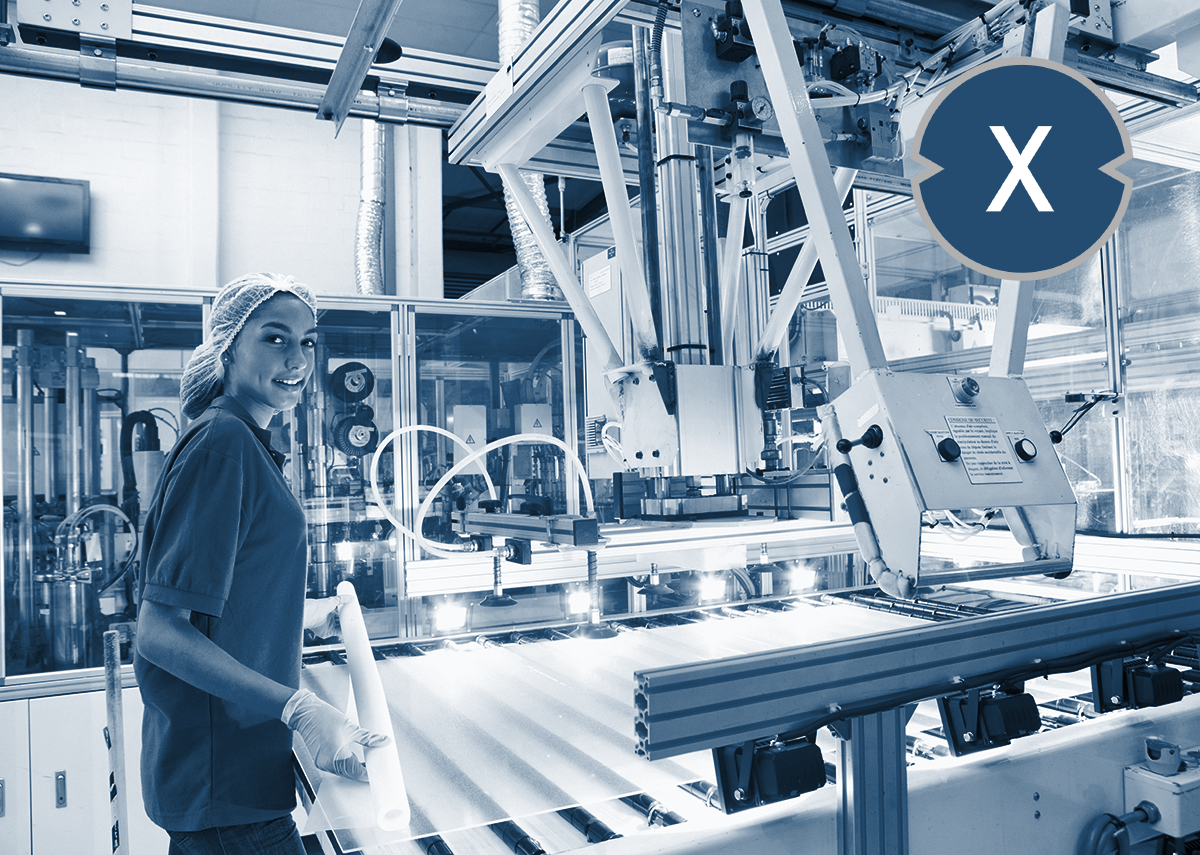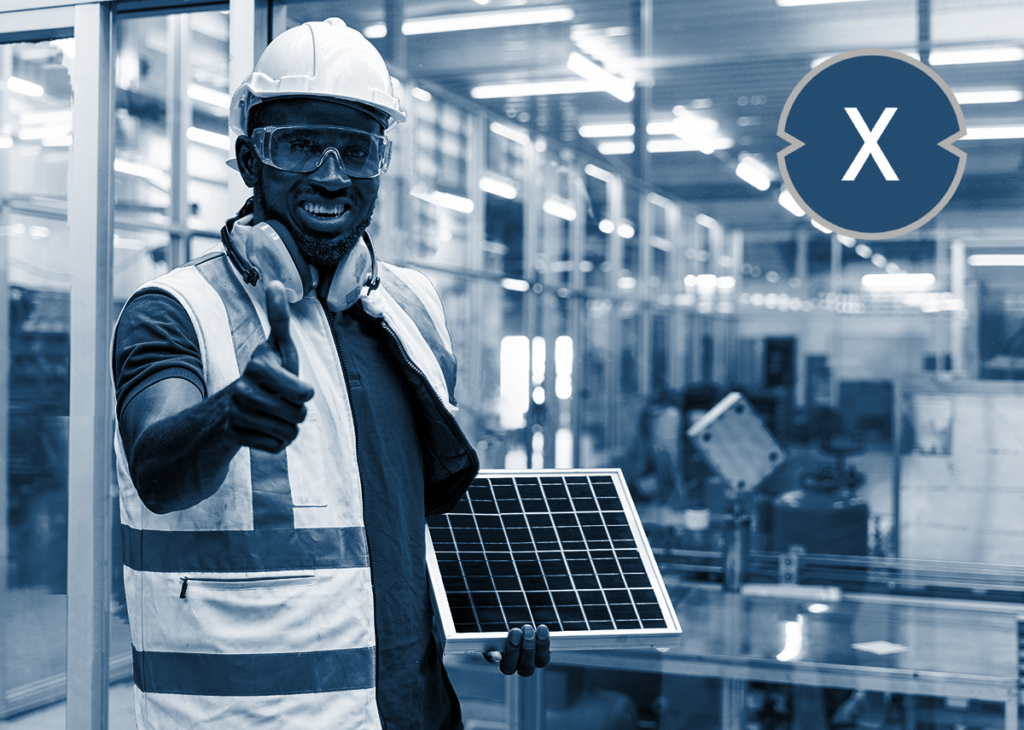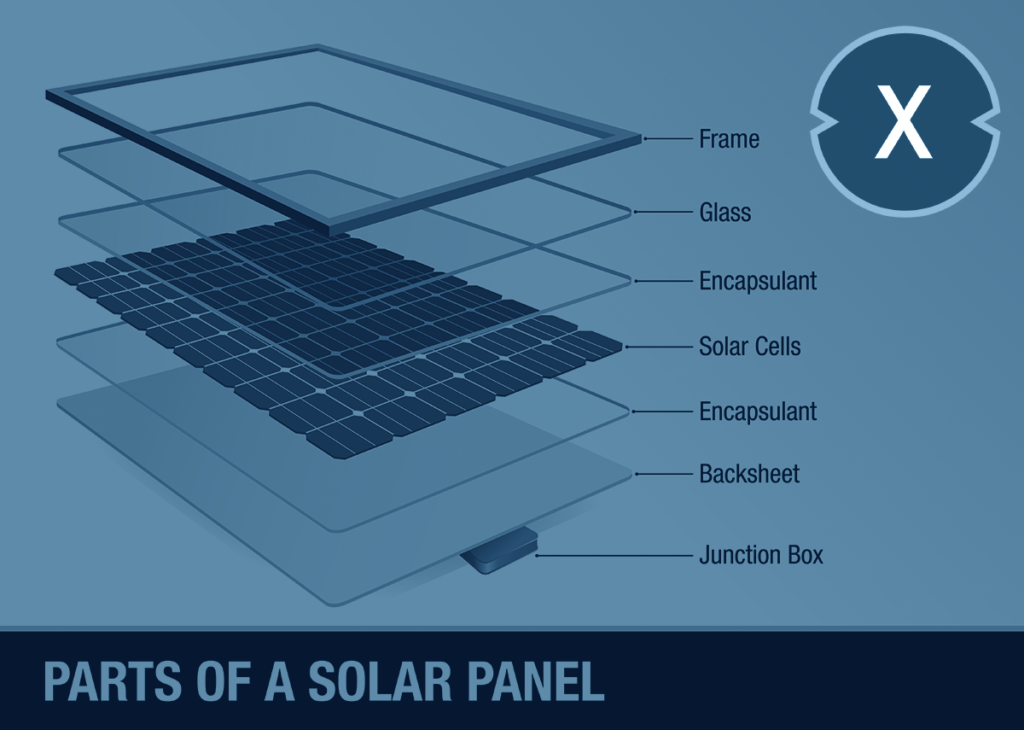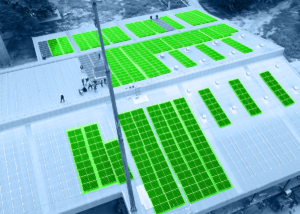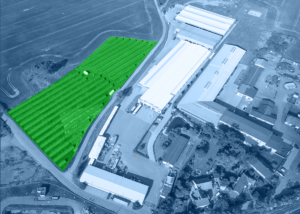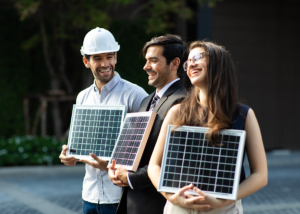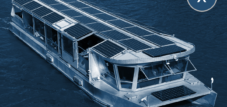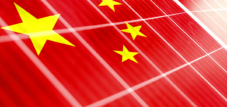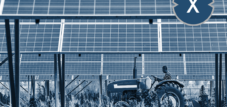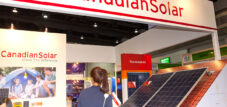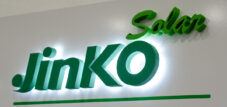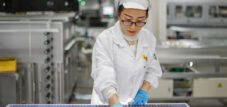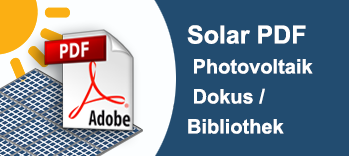Solar glass – the forgotten component – the next bottleneck is inevitable
Language selection 📢
Published on: July 3, 2022 / update from: July 3, 2022 - Author: Konrad Wolfenstein
Solar glass is the next production bottleneck
When we talk about the entire PV value chain, the heaviest component in terms of weight after the solar cells is consistently neglected: the solar glass. I am not aware of any publication that has so far described the problems with procuring large quantities of solar glass for the production of gigawatt-scale PV modules to realize the energy transition.
The EU is becoming dangerously dependent on China because it ignores this component
European module production is still insignificant on a global scale and dependence on China is dangerous. Germany and the EU want to change this massively and increase European production capacities. The fact that this also includes the procurement of solar glass is consistently forgotten. The industry is already struggling with problems today.
In Slovakia, for example, Agora Solar is preparing to commission a production line for 150 MWp modules. It turns out that procuring the heaviest component, the solar glass, is difficult. Offers from European and Indian solar glass producers were either not submitted or were even withdrawn due to the current gas shortage.
The world's best production technology for solar glass is in Germany - demand for this is only from China
The Chinese plan holistically, because module production is not possible without solar glass and gigantic amounts of glass are consequently needed for the gigantic PV expansion goals. That's why the German company Grenzbach received orders from China in 2020 for more than 160 drawn glass lines specifically for the photovoltaic market (Solarserver, May 21, 2021). These have now been delivered. There are only a handful of such lines in Europe and there are no known plans to close this ever-growing gap. Germany offers the world's best melting technology with world market leaders such as Sorg and Horn. France and England also have excellent providers. Lisec in Austria supplies the best systems for coating and hardening technology. The systems for the solar sector are delivered to China and not to Europe.
The statistics for patents show that this will not remain the case. There are over 1,000 Chinese patents, compared to only a few from Europe. China is the technological pioneer here and would also like to dominate production plant construction in the future.
Building a solar glass factory is a huge investment of up to €100 million for an optimally sized production line with a melting capacity of 300 tons. 24 hours each. The energy consumption (80% gas) and the significant environmental impact in the form of CO2 and nitrogen cause considerable planning effort and long approval procedures. The period from planning to operation of solar glass production is therefore 3-4 years. This is long compared to six to 10 months for a PV module production line.
The 100% secure supply of gas 24/365 is also essential, as the current technology for producing solar glass requires the use of 80% gas for the melting processes.
One could argue that we should buy solar glass from China. However, the argument of securing a European supply chain and saving logistics costs through European production then collapses. This will increase the existential dependence on China, which is already viewed very critically today. Finally, the accusation that production in China takes place under poor political and environmental conditions is also serious. Several glass factories are located in Xinjiang province, the oppressed Uyghur region. With a weight share of up to 80% of a standard PV module, transporting the glass is almost as costly and time-consuming as the finished modules.
Gigantic expansion targets for PV production in the EU will cement the 90% dependence on China for a long time
The expansion goals for a “new European solar industry” are gigantic and were recently corrected significantly in view of the war in Ukraine. In most cases, the production capacities should be expanded along the entire value chain, i.e. from silicon to wafers and cells to module production. Oddly enough, this list and plans for gigawatt factories always lack an important component: the solar glass required for 99 % of all modules. This indispensable component is not sufficiently available in Europe. The following arguments show this:
- Ultrawhite solar glass is mainly produced as structural glass using a rolling process. Special shaping rollers are used to form a microstructure on the thickness of the glass and on both sides of the glass. This largely keeps the reflection in the glass and thereby results in a high degree of transmittance. The usual flat glass production is less suitable for solar glass.
- Currently, module production of a maximum of around 3-4 gigawatts can be achieved using solar glass produced in Europe. Nominal proportions of the glass were imported from India and a few other countries until 2021. However, India will need the glass produced there for its own gigantic PV production plans. It is noticeable that the largest European solar glass supplier Interfloat, with its GMB Glasmanufaktur Brandenburg production facility in Tschernitz, was sold to the Indian market leader Borosil in April 2022 (PV Magazine, April 25. 2022). Given that production there is entirely dependent on uninterrupted gas supplies, industry experts were surprised. Apart from the risk of an interruption of Russian gas deliveries, with today's gas prices, cost-covering production is only possible with almost unrealistically high sales prices for the solar glass produced. Borosil was probably more interested in market access, especially since costs of approx. €30 million will have to be raised for an expected “cold repair” of the melting tank. Borosil wants to increase its production capacity to a total of 2,600 t/d by 2025. Is it really the claimed 450 t? It is doubtful that this is due to production in Brandenburg. But even this amount would only be enough for around 2.5 GW of module production.
- The expansion targets published by the EU assume an expansion of European module production capacities of up to 30 GW by 2030. These were increased even further after the Russian invasion of Ukraine. Even if module efficiencies increase, this would result in almost ten times the demand for solar glass in 2030 compared to 2021. The question arises as to how this demand should be met, since new production capacities for solar glass are not in sight.
- Glass production requires a lot of energy, 80% of which has to be covered by natural gas. Production is not flexible and the melting furnaces have to be heated around the clock, 365 days a year. With a gas price of around €6 per MW, energy accounted for around 35% of production costs in 2020. On March 7, a price of €211 was quoted on the TTF Dutch Future spot market. Even if this maximum price has now been reduced to €87 (on May 27, 2022), no one currently expects prices below €50 per MW to be reached in the next few years.
- It is easy to calculate what this means for European solar glass production. If the energy share per square meter was around €2 in 2020, this would rise to €12 if it were increased sixfold. The price of glass would then rise from around €7.80 (2021) to €21.50 per square meter or from €14 per module to almost €39 per 1.8 square meter module. However, this does not take into account a significantly higher increase in the event of a delivery stop or embargo. Therefore, natural gas-powered solar glass ovens in particular are no longer economical in Central Europe and new investments have no chance of being approved.
- So-called hybrid tubs can be considered as a possible alternative. The hybrid technology for glass production is convincing: with a maximum electric content of 80% and only 20% gas, up to 16% energy could be saved and CO2 emissions could be reduced by 80% (according to publications by Sorg - www.sorg.de) However, it should be critically noted that these were in principle only developed for container glass and that no industrial plant is yet in operation for this production.
Solar production in Europe must be rebuilt - whatever the cost
It will be interesting to see where the 12 million square meters of solar glass for Enel's 3GWp module production plant in Sicily, announced at the beginning of April 2022, will come from. Two solar glass production lines, each with a melting capacity of 200 tons per day, are required for production. Enel will receive 118 million euros in grants from the EU Commission to expand its existing 200 MW cell and module factory in Sicily to a production capacity of 3 MW by 2024. It is an investment in the entire PV value chain. Solar glass will be the forgotten component again.
Another press release is even more astonishing (Photon newsletter from April 21, 2022): The start-up Carbon SAS, based in Roche-la-Molière, France, has announced a partnership with the French ACI Groupe. ACI will support Carbon in realizing plans for a fully integrated solar factory in France. Module production is scheduled to begin in 2024 with a capacity of 500 megawatts. The capacity should then be increased to five gigawatts by 2025 and to 15 to 20 gigawatts by 2030. The company states that it wants to cover the entire value chain, starting with the production of ingots through wafers and cells – IBC and TOPCon.
The invasion of Russia in Ukraine has focused on the question of energy security in Europe. "One way to strengthen the energy independence in large parts of Europe is the acceleration of the use of solar systems and the improvement of the production base," says Solarpower Europe.
An official of the European Commission indicated at the latest solar power summit in Brussels in April 2022 that solar production in Europe had to be rebuilt - “it cost what it wants”.
However, the current treatment of the promotion of a European solar industry is clearly too short-sighted: without the inclusion of solar glass as the most energy-intensive and heaviest component, the dependence on China as the global solar glass market leader remains. The current estimated solar glass gap of 60% will grow to 90% with multi-GW expansion plans.
Nobody would come up with the idea of excluding the necessary steel from the production chain of automobile production. But this is done when considering the value chain for PV module production!
High anti-dumping duties for solar glass from China, but not for the solar modules
Due to the high anti-dumping duties for solar glass from China (customs and anti-dumping up to 100%), imports from China currently play a less important role. That will change because, due to a lack of other sources, only China will be able to supply the quantities required. The anti-dumping surcharge will have to be paid and will result in a cost disadvantage for PV modules produced in Europe compared to Chinese PV modules that are not imported through surcharges. The anti-dumping duty is only levied on imported solar glass, but not on the PV modules (which of course also contain the glass).
"Similar to Russia, the asymmetry and the one-sidedness of the dependence of Germany on China is a central problem," said Diw President Marcel Fratzscher. China is increasingly using this as a means of pressure towards Germany and Europe. The dependence on Chinese components (including the BOS components including inverter) is around 90 %. It will increase with the expansion of module production in Europe.
Simon Hage writes in his editorial in Der Spiegel on May 28, 2022: “The skyrocketing prices for gas and oil as a result of the Russian invasion of Ukraine illustrate what a policy of looking the other way can lead to - into a dependency that can only be corrected at high economic costs leaves. And the dependence on China is already greater than that on Russia.” This is especially true in the PV area. …”The EU needs an industrial policy that consistently supports the development of key strategic sectors.” Certainly not a policy that ignores a future dependency of more than 90% on the indispensable component of solar glass.
About the author
Erich Merkle has been working in the PV industry for over 20 years.
He was one of the pioneers in setting up the first production lines for modules in Germany and in building megawatt PV power plants.
He was instrumental in the development of Almaden's first thin double glass modules and their market launch.
As early as 2007/8 he planned the first German solar glass production in Brandenburg. The project was not realized due to the collapse of the PV industry in Europe and the financial crisis.
Dr. Merkle heads GridParity AG and advises AGORA sro in Slovakia on setting up PV module production with up to 150 MW in 2023, 450 MW from 2024).
- Warehouses, production halls and industrial halls with their own power source from a photovoltaic roof system - Image: NavinTar|Shutterstock.com
- Industrial plant with its own power source from an outdoor photovoltaic system - Image: Peteri|Shutterstock.com
- Plan solar systems with photovoltaic solutions for freight forwarding and contract logistics
- B2B solar systems and photovoltaic solutions & advice
- Plan photovoltaics for warehouses, commercial halls and industrial halls
- Industrial plant: Plan a photovoltaic open-air system or open-space system
- Plan solar systems with photovoltaic solutions for freight forwarding and contract logistics
- B2B solar systems and photovoltaic solutions & advice
With Xpert.Solar, your individual strategic advice for photovoltaics, autonomous power supply and electricity self-sufficiency
I would be happy to serve as your personal advisor.
You can contact me by filling out the contact form below or simply call me on +49 89 89 674 804 (Munich) .
I'm looking forward to our joint project.
Xpert.Digital – Konrad Wolfenstein
Xpert.Digital is a hub for industry with a focus on digitalization, mechanical engineering, logistics/intralogistics and photovoltaics.
With our 360° business development solution, we support well-known companies from new business to after sales.
Market intelligence, smarketing, marketing automation, content development, PR, mail campaigns, personalized social media and lead nurturing are part of our digital tools.
You can find out more at: www.xpert.digital – www.xpert.solar – www.xpert.plus



